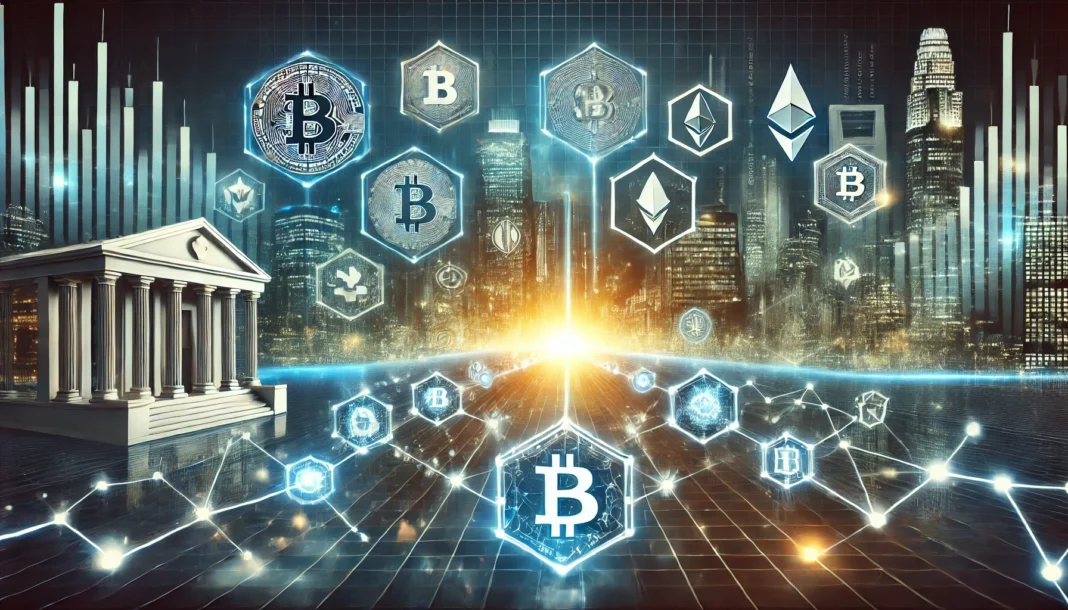Introduction
The evolution of finance has always been marked by transformative technologies, from the advent of paper money to the rise of digital banking. Today, blockchain technology is redefining how we perceive and manage assets. One of the most groundbreaking developments is the tokenization of real-world assets (RWAs), which is set to bridge the gap between traditional finance (TradFi) and the crypto ecosystem. This article explores the mechanics, benefits, challenges, and future of RWA tokenization.
What Is Real-World Asset (RWA) Tokenization?
Defining RWAs in the Context of Blockchain
Real-world assets refer to tangible or intangible items such as real estate, commodities, bonds, and intellectual property. Tokenization involves converting these assets into digital tokens on a blockchain, representing ownership or a stake in the underlying asset.
How Tokenization Works: From Physical to Digital
Tokenization starts with identifying the asset and assigning it a digital representation through smart contracts. These tokens can then be bought, sold, or traded on blockchain platforms, providing transparency and security through immutable ledgers.
Key Components of RWA Tokenization
- Smart Contracts: Automate transactions and enforce rules.
- Custodians: Ensure the real-world asset is securely held.
- Legal Frameworks: Provide legal recognition of tokenized ownership.
The Bridge Between Traditional Finance and Crypto
The Role of Blockchain in Financial Innovation
Blockchain offers a decentralized, transparent, and efficient way to handle transactions, which traditional finance systems often lack.
How RWA Tokenization Enhances Liquidity and Accessibility
Tokenization allows fractional ownership, enabling smaller investors to participate in markets traditionally reserved for the wealthy. It also provides 24/7 global trading opportunities.
Case Studies: Successful Integrations in Traditional Finance
- JPMorgan’s Onyx: Tokenizing assets for institutional investors.
- RealT: Fractional ownership of real estate properties.
Types of Real-World Assets Being Tokenized
- Real Estate: Investors can buy fractions of properties, earning rental income proportionally.
- Commodities: Gold, oil, and other resources are tokenized for easier trading.
- Intellectual Property and Art: Creators can monetize their work globally.
- Bonds and Equities: Making traditional securities more liquid and accessible.
Benefits of RWA Tokenization
- Improved Liquidity: Assets can be traded instantly without intermediaries.
- Fractional Ownership: Reduces barriers to entry for small investors.
- Transparency and Security: Blockchain’s immutability ensures trust.
- Reduced Costs: Eliminates the need for multiple intermediaries.
Challenges and Risks Involved
- Regulatory Uncertainty: Varying global regulations complicate compliance.
- Technological Risks: Smart contract vulnerabilities can be exploited.
- Valuation Issues: Determining the real-time value of tokenized assets can be complex.
- Legal Ambiguity: Ownership rights need clear legal definitions.
The Regulatory Landscape for RWA Tokenization
- Global Regulatory Trends: The U.S. focuses on securities laws, the EU emphasizes MiCA regulations, and Asia is exploring flexible frameworks.
- Navigating Compliance: Hybrid systems require both blockchain and traditional compliance measures.
- Smart Contracts and Legal Enforceability: Legal recognition varies by jurisdiction.
Innovative Projects Leading the RWA Tokenization Space
- Notable Platforms: Securitize, Polymath, and RealT.
- Tokenized Real Estate: Projects like Harbor and Propy are pioneers.
- DeFi’s Role: Protocols like MakerDAO are integrating RWAs as collateral.
The Future of RWA Tokenization
- Emerging Trends: Institutional adoption, interoperability between blockchains, and enhanced regulatory clarity.
- Global Financial Impact: Potential to redefine asset management, trading, and investment paradigms.
- Mainstream Adoption: As technology matures, RWA tokenization may become a standard in finance.
- RWA tokenization is more than a technological trend; it’s a financial revolution. By bridging traditional finance and crypto, it democratizes access to investment opportunities, enhances liquidity, and drives global economic inclusion. As regulatory frameworks evolve and technology matures, the tokenization of real-world assets is poised to reshape the future of finance.















